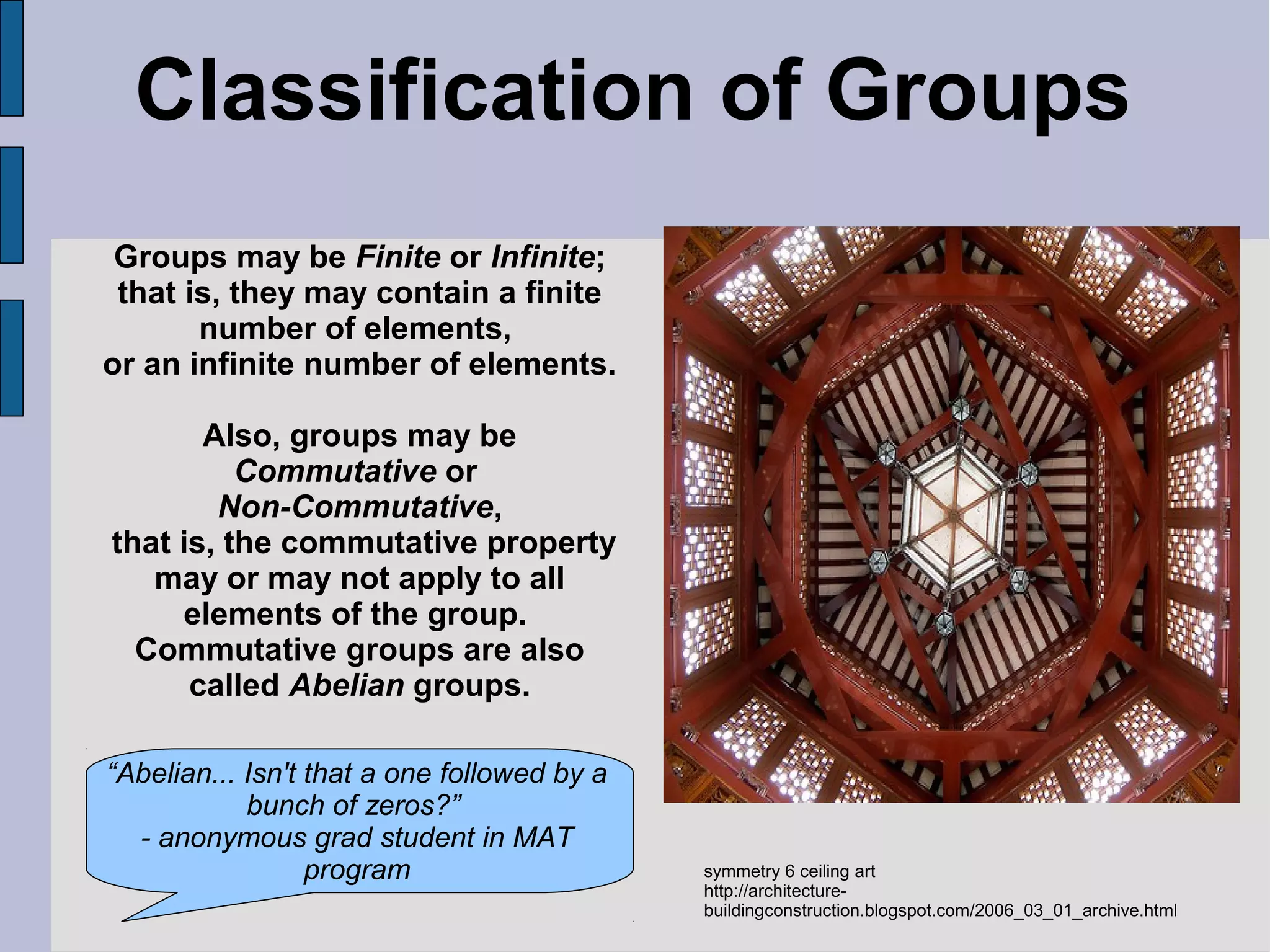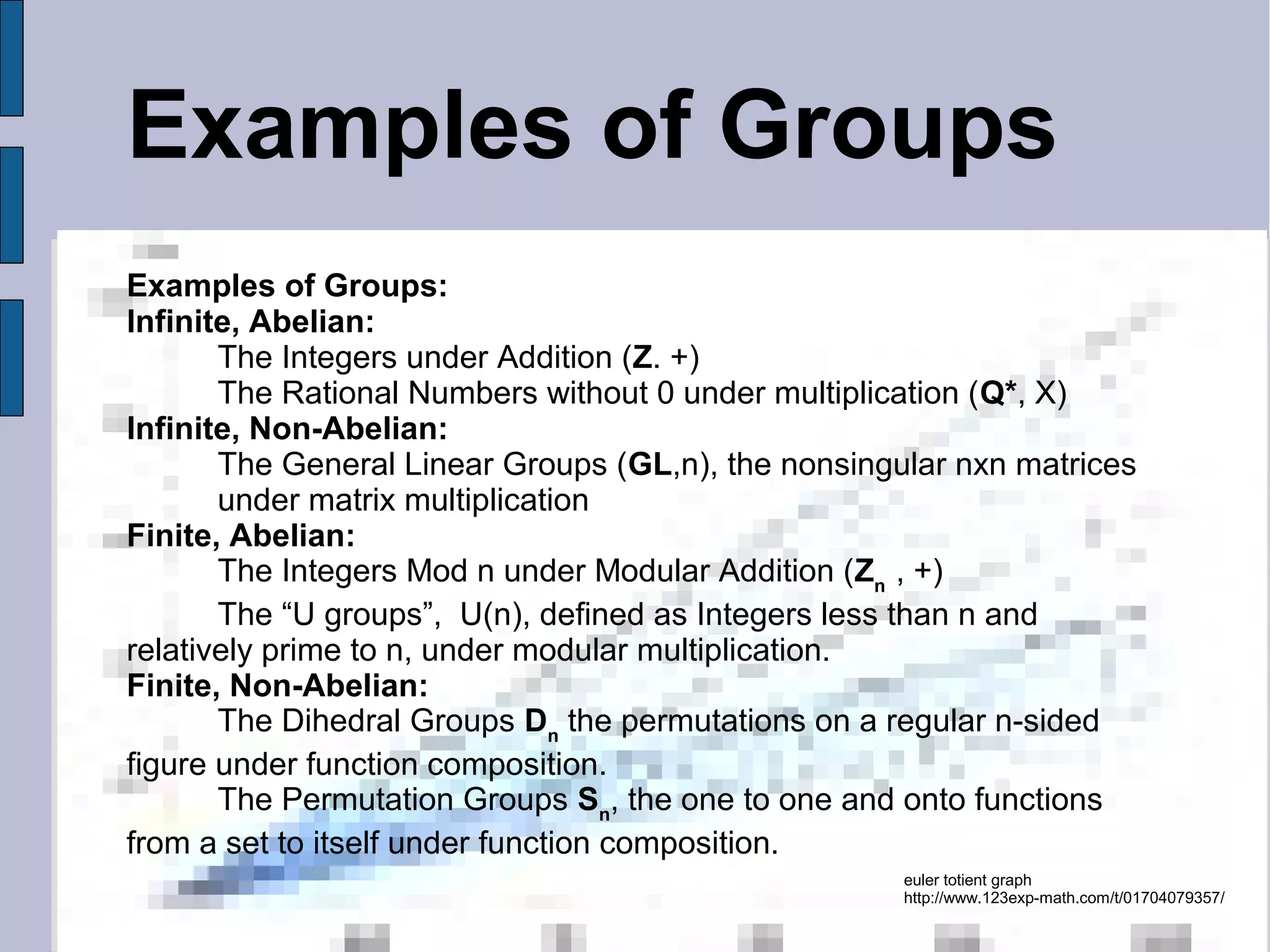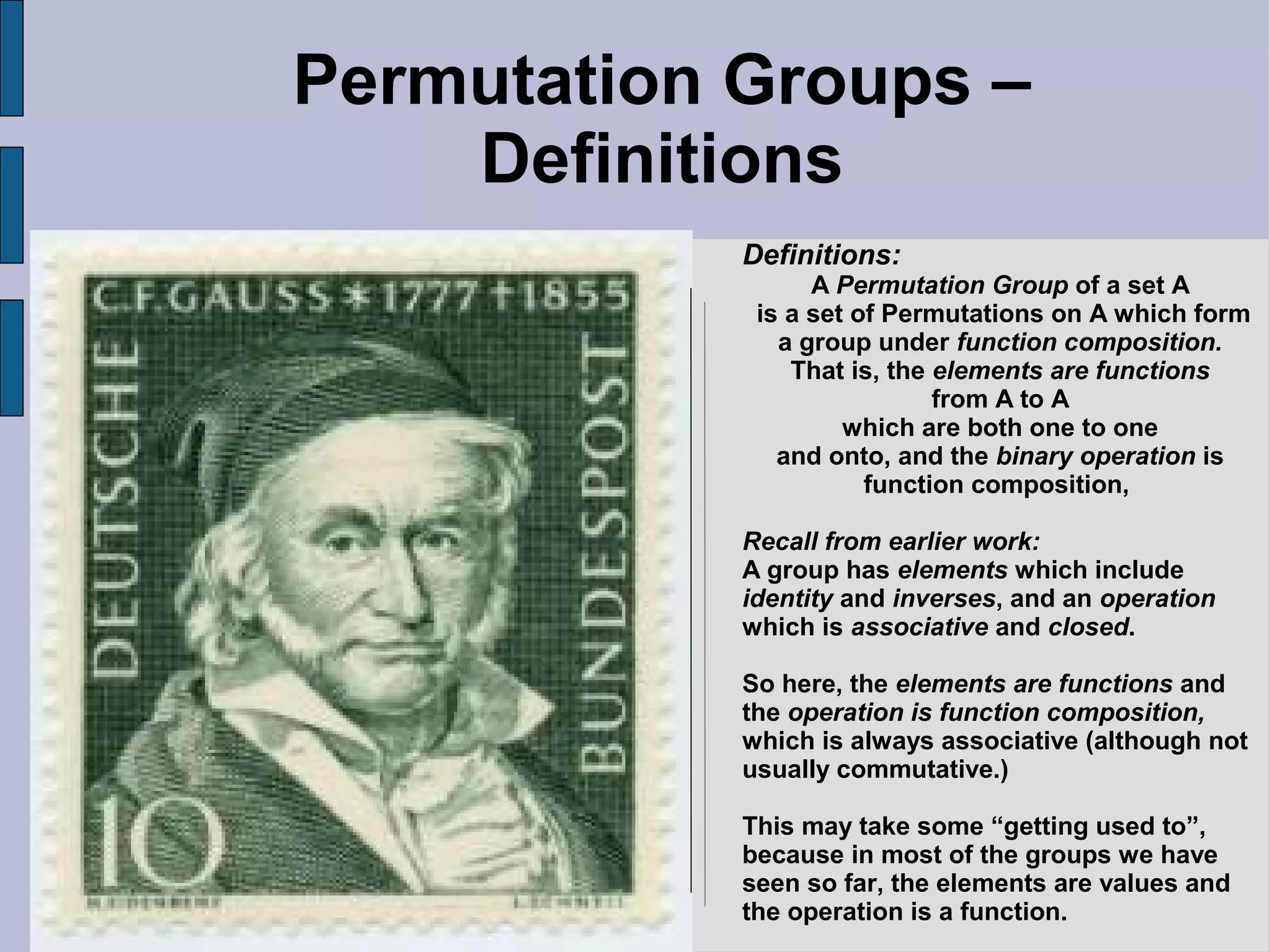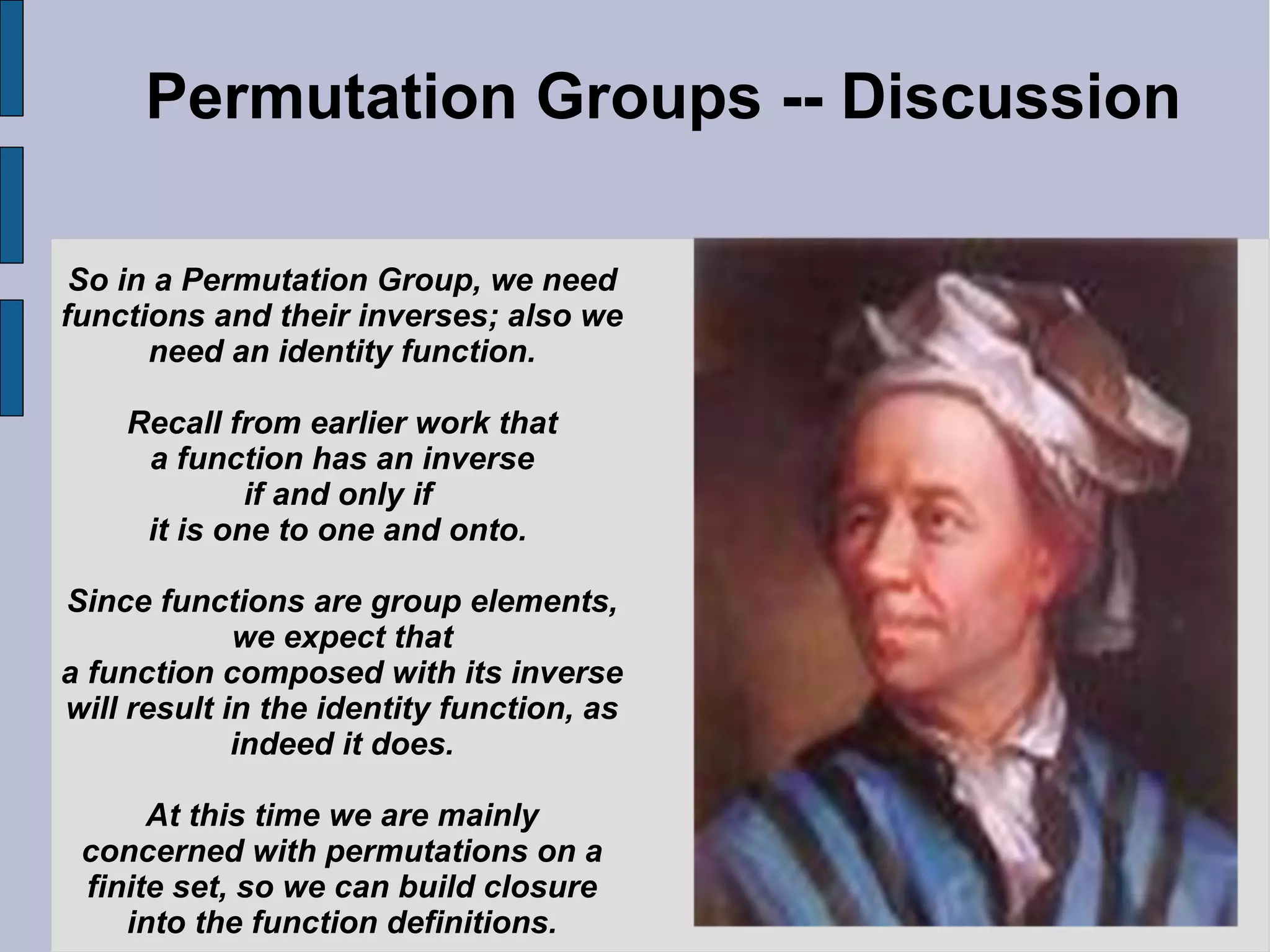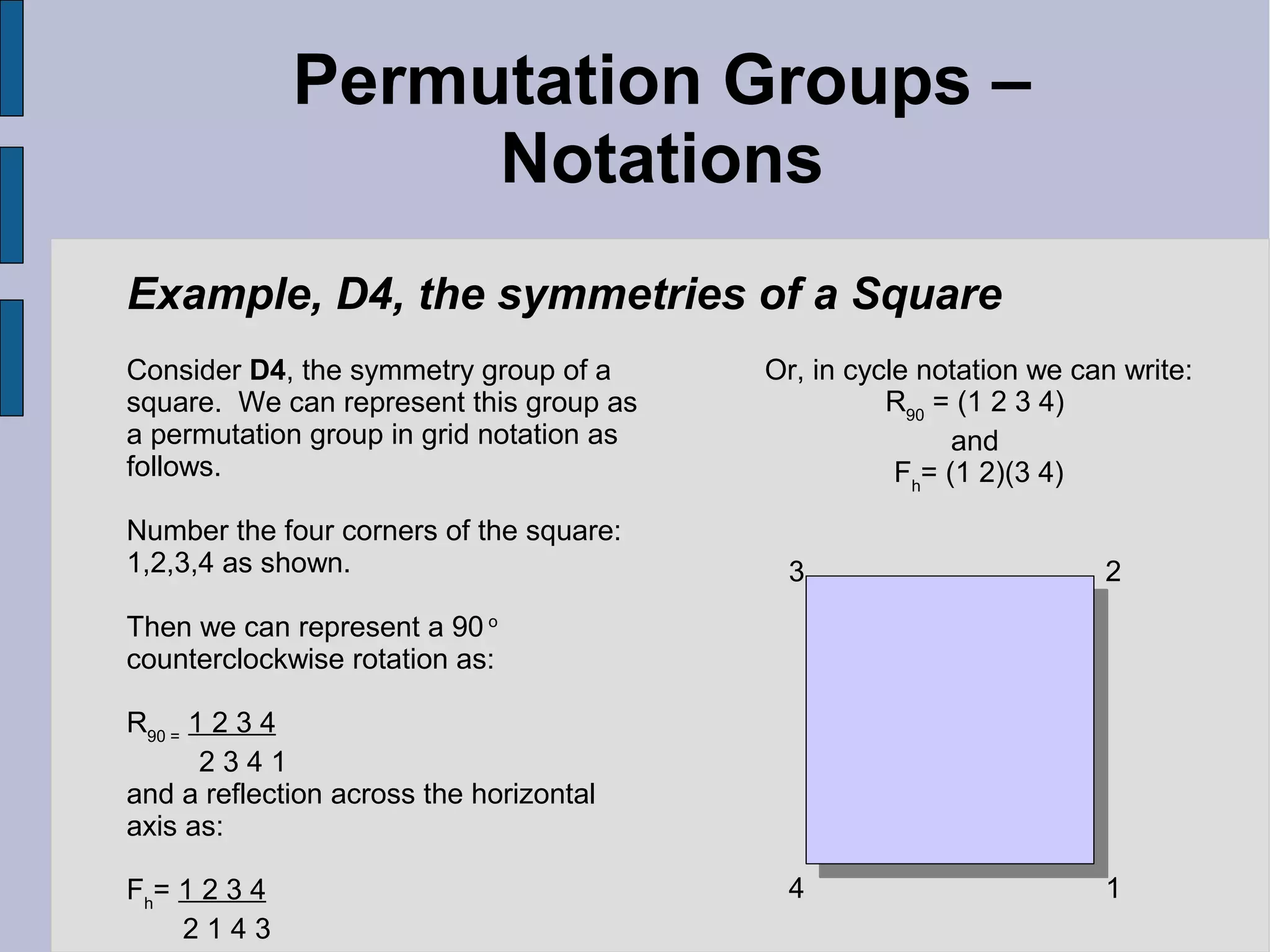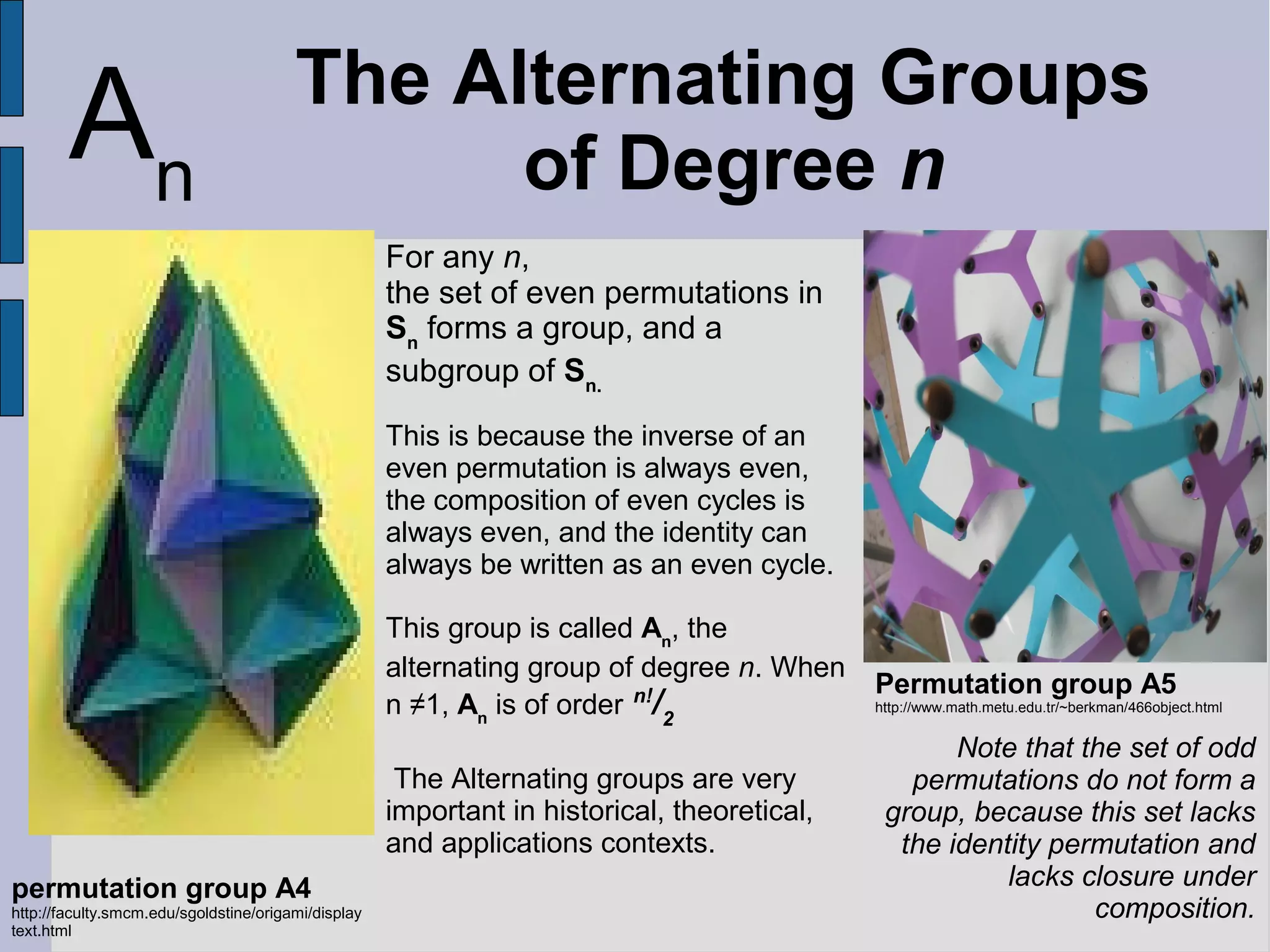This document provides a summary and review of key concepts from Abstract Algebra Part 1, including:
- Groups and their properties of closure, associativity, identity, and inverses
- Examples of finite and infinite, abelian and non-abelian groups
- Subgroups, including cyclic subgroups, tests for subgroups, and examples
- Additional concepts like the order of an element, conjugation, and the center of a group




